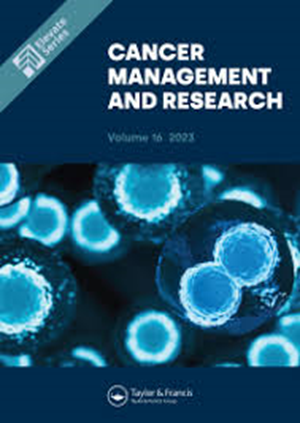Systematic Review of the Cost-Effectiveness of Home-Based Palliative Care Interventions in Patients with Cancer: A Critical Analysis
IF 2.5
4区 医学
Q3 ONCOLOGY
引用次数: 0
Abstract
Background: The increased prevalence of cancer and the negative impact of pain on the quality of life of patients underscore the need to implement efficient palliative care interventions and management of pain. The cost-effectiveness of palliative care interventions for cancer, mostly pharmacological and delivered through home-based palliative care services, is unclear. Most of the studies do not take into account indirect costs nor consider variations across different geographical regions.Objective: To describe existing and cutting-edge knowledge on cost-effectiveness or item costs related to palliative home-based care for patients with cancer. We evaluated various costs, including direct medical, non-medical, and indirect costs in different geographical regions and analysed how different options for care affect the patients’ quality of life and associated expenses.
Methods: This Prospero-registered systematic review (CRD42023404217) adhered to the PRISMA criteria. Following a multistep selection process, we selected 22 articles published between 2013 and 2023 focused on quality of life outcomes and cost-effectiveness of home-based palliative care for cancer patients.
Results: Home-based palliative care decreases the number of hospital visits, while its influence on patients quality of life is currently difficult to demonstrate across geographic regions based on available evidence. Overall, home care decreases the costs associated to the palliative care of patients with cancer. The cost structure analysis revealed that besides healthcare costs, informal care expenses and productivity losses represent a significant proportion of overall expenses). In Europe, the direct medical, non-medical, and indirect costs (in purchasing power parity) were on average &dollar1,941, &dollar842, and &dollar1,241, per month per person, respectively. In the USA and Asia, direct medical and indirect costs are on average &dollar1,095 (USA) vs &dollar1,444 (Asia) and &dollar2,192 (USA) vs &dollar1,162 (Asia).
Conclusion: In conclusion, the studies reviewed highlight significant cost variations and potential savings associated with palliative home-based care for cancer patients. Home-based palliative care, particularly involving medications, has shown favorable cost-effectiveness compared to hospital care. Specialized palliative home care, psychological interventions, and outpatient services further contribute to overall cost savings. However, the economic impact varies across different geographical contexts and cost categories, emphasizing the need for tailored approaches in palliative care planning and implementation.
癌症患者居家姑息关怀干预成本效益的系统性回顾:批判性分析
背景:癌症发病率的增加以及疼痛对患者生活质量的负面影响突出表明,有必要实施有效的姑息治疗干预措施和疼痛管理。癌症姑息治疗干预措施的成本效益尚不明确,这些干预措施大多是通过家庭姑息治疗服务提供的药物治疗。大多数研究既未考虑间接成本,也未考虑不同地理区域的差异:描述与癌症患者居家姑息治疗相关的成本效益或项目成本方面的现有知识和前沿知识。我们评估了不同地区的各种成本,包括直接医疗成本、非医疗成本和间接成本,并分析了不同护理方案对患者生活质量和相关费用的影响:这篇在 Prospero 注册的系统性综述(CRD42023404217)遵循了 PRISMA 标准。经过多步筛选,我们选取了 2013 年至 2023 年间发表的 22 篇文章,这些文章关注癌症患者居家姑息治疗的生活质量结果和成本效益:结果:居家姑息治疗减少了患者到医院就诊的次数,但根据现有证据,居家姑息治疗对患者生活质量的影响目前还很难在不同地区体现出来。总体而言,居家姑息治疗降低了癌症患者姑息治疗的相关成本。成本结构分析表明,除医疗费用外,非正规护理费用和生产力损失在总支出中也占有很大比例)。在欧洲,每人每月的直接医疗、非医疗和间接成本(按购买力平价计算)平均分别为 1941 美元、842 美元和 1241 美元。在美国和亚洲,直接医疗和间接成本分别为平均 1,095 美元(美国)和 1,444 美元(亚洲),以及 2,192 美元(美国)和 1,162 美元(亚洲):总之,所审查的研究强调了与癌症患者居家姑息关怀相关的显著成本差异和潜在节约。与医院治疗相比,居家姑息治疗,尤其是药物治疗,显示出良好的成本效益。专门的居家姑息治疗、心理干预和门诊服务进一步促进了总体成本的节约。然而,在不同的地理环境和成本类别中,其经济影响也不尽相同,这就强调了在规划和实施姑息关怀时需要采取量身定制的方法。
本文章由计算机程序翻译,如有差异,请以英文原文为准。
求助全文
约1分钟内获得全文
求助全文
来源期刊

Cancer Management and Research
Medicine-Oncology
CiteScore
7.40
自引率
0.00%
发文量
448
审稿时长
16 weeks
期刊介绍:
Cancer Management and Research is an international, peer reviewed, open access journal focusing on cancer research and the optimal use of preventative and integrated treatment interventions to achieve improved outcomes, enhanced survival, and quality of life for cancer patients. Specific topics covered in the journal include:
◦Epidemiology, detection and screening
◦Cellular research and biomarkers
◦Identification of biotargets and agents with novel mechanisms of action
◦Optimal clinical use of existing anticancer agents, including combination therapies
◦Radiation and surgery
◦Palliative care
◦Patient adherence, quality of life, satisfaction
The journal welcomes submitted papers covering original research, basic science, clinical & epidemiological studies, reviews & evaluations, guidelines, expert opinion and commentary, and case series that shed novel insights on a disease or disease subtype.
 求助内容:
求助内容: 应助结果提醒方式:
应助结果提醒方式:


